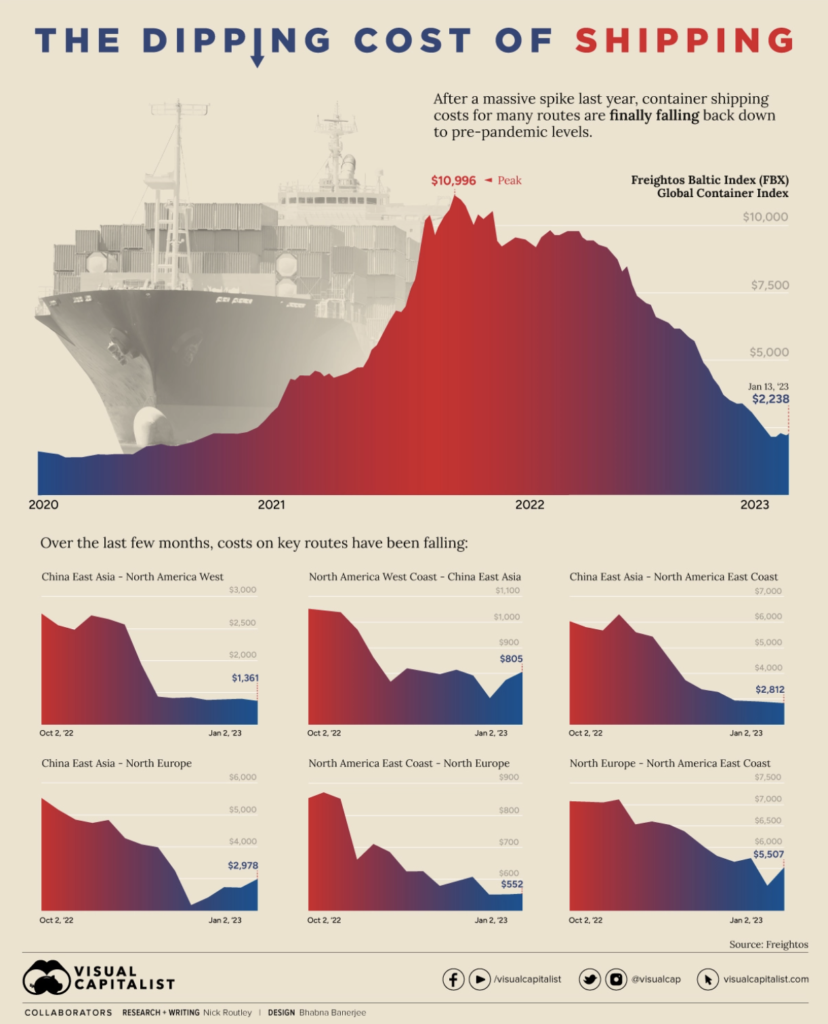A little over a year ago, congestion at US West Coast ports was making headlines and the global cost of shipping containers had reached record levels. However, Visual Capitalist ensures the drop in freight rates in maritime transport to pre-pandemic levels.

Today, shipping costs have fallen again, with some routes approaching pre-pandemic levels. The chart above, using data from Freightos, shows just how drastically costs have dropped in a short period of time.
The Freightos Baltic Index (FBX), a widely recognized benchmark for global freight rates, has fallen 80% from its peak at the end of 2021.
Why shipping costs matter
The vast majority of trade takes place across the world’s oceans, so skyrocketing shipping costs can wreak havoc on the global economy.
A recent IMF study, which included 143 countries over the past 30 years, found that shipping costs are a major driver of inflation around the world. In fact, when freight rates double, inflation increases by 0.7 percentage points.
Of course, some nations feel the effects of higher shipping costs than others. Countries that import more than they consume and that are more integrated into the global supply chain are more likely to see inflation rise as shipping costs rise.
Dropping freight rates is a good thing, right?
Falling shipping costs are great news for everyone except, well… shipping lines.
While most of us can eventually expect better supply chain efficiencies and lower inflationary pressure, shipping companies are seeing the end of a two-year boom period.
For example, major carriers like COSCO and Hapag-Lloyd saw a staggering 10x or more increase in profit per 20-foot equivalent unit (TEU) shipped.
For now, shippers are canceling trips and sending obsolete ships for scrap to prevent prices from bottoming out entirely. In early January, container spot freight rates increased for the first time in 43 weeks, indicating that the roller coaster that shipping rates have been on since the start of the pandemic may be coming to an end.
Source: Visual Capitalist

